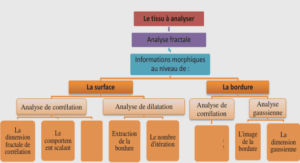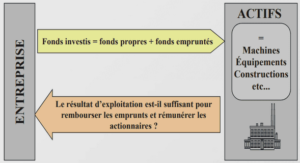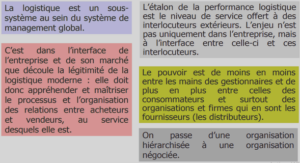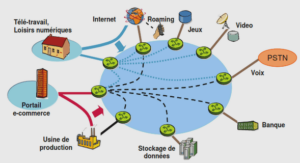Kwakum (A91, ISO 639-3 kwu, glottocode kwak1266) is a dialect cluster spoken in the East Region of Cameroon. Ethnologue distinguishes four dialects: Baki, Bet n, Til and Kwakum, which is the focus of this description. There is a high degree of intelligibility between Kwakum and Til, whereas dialectal variation is stronger between Kwakum, Baki and Bet n. The Kwakum variety discussed in this chapter is spoken in the Doume subdivision. It is referred to by its speakers as Kwakum , whose folk etymology for the language name is Kwakum n ‘generosity and fa e prosperity’. Outside Kwakum communities, including in formal milieus such as the administration, the language is referred to as Bakum or Abakum.
According to a census by Eleca , the Kwakum dialect has about 7000 native speakers, whose villages are spread around the Doume sub-division (Grand Sibita and Petit Sibita, Grand Paki and Petit Paki, Mendim, Loumbou, Kempong, Kobila, etc.).
As it can be observed in Map 2, Kwakum communities share borders with communities speaking Makaa (Bantu A83), Pol (Bantu A92), Gbaya (Gbaya NgbakaManza) and Baka (Ubangi).
Moreover, Kwakum speaking settlements typically have immigrant communities speaking Kako (Bantu A93) and/or languages from the Grassfields area and northern Cameroon. In this multilingual setting, Kwakum is mainly used in informal or traditional settings (family, market, cultural ceremonies, etc.) while communication in formal contexts (administration, school, etc.) is mostly in French. In addition to these two languages, many Kwakum speakers also speak Ewondo (Bantu A72), Kak (Bantu A91) and/or Gbaya. The Kwakum history told by its people has it that the Kwakum people came from the savanna area (i.e. toward the north-east of their actual site), where they had to flee from the threatening expansion of the people of the northern part of the country. The actual settlements of Kwakum communities allegedly reflect the different areas where they settled and parted . Kwakum people mainly live on farming, hunting and fishing, whose products serve for personal or commercial usage.
Kwakum speakers distinguish their language, as it is presently used, from an ancient state of the language referred to as k ngànd , mainly used by old people. As noted by Belliard (2005: 56-58), information gathered about k ngànd is ambiguous and often contradictory. Actually, some people refer to it as the language used by the Kwakum people before they separated into the different communities they represent today, with their own dialect. For other people, k ngànd is a coded language used for initiation. There are people who also use the term k ngànd to refer to the Til dialect spoken in the Dimako subdivision (Belliard 2005: 57). Conversely, for other people, k ngànd , which they qualify as the ‘authentic’ language, refers to the wà n dialect spoken in the Doume area and cannot be associated to the Til dialect. However, where testimonies about the k ngànd language converge is that it is full of symbolic and stylistic devises.
Johnston (1919/1922) cited by (Maho 1999: 32) considers Kwakum as a semi-Bantu language. The language is classified by Guthrie (1971) under the A90 group, alongside with Pol (A92) and Kak (A93). I will eep Guthrie’s classification, since it is the most widely used.
This research work was carried out as part of the research projects BantuTyp (granted by USPC) and LC2 Areal phenomena in Northern sub-Saharan Africa of the Labex EFL (ANR-10-LABX-0083). The goal of this project was to carry a grammatical analysis of three typologically different north-west Bantu languages which could serve as a starting point for research in Typology and Areal Linguistics. I found the Kak group (Bantu A90) particularly interesting given its location in the macro-Sudan belt, a contact zone between different language families on the one hand, and because of the innovations that the other A90 languages present on the other hand. Within the A90 group, Kwakum held my attention because it was the least described of the three A90 languages, Polri (Wega Simeu 2012) and Kak (Ernst 1992, 1994, 1995) having already benefited at least from a grammatical analysis each.
Although being a Cameroonian, I had never heard about Kwakum before. I had my first contact with the language through the works of Belliard (2005, 2007) who wrote a grammatical sketch of the language, his primary research interest being an ethnomusicological study of the Kwakum people.
This study aims at providing a synchronic analysis of Kwakum that will (hopefully) serve as a solid base for future research on the language. The data used for this grammatical analysis were collected by me between 2014 and 2018 from Kwakum speakers living in Grand Sibita. These data consist of about 53 hours of recordings, containing elicited materials as well as a corpus of transcribed spontaneous speech (narrative and procedural texts, speeches, etc.). The recordings were made during my two field trips (which lasted 156 days for the first and 117 days for the second) and during my holidays in Cameroon. The data collected in the field were supplemented with hours of telephonic working sessions with my consultants, mainly dedicated to additional elicitation and some verification. The elicitation material included questionnaires inspired from existing ones (Max Planck Institute, Bouquiaux & Thomas 1976). The mass of data was organised into a lexical database of 1990 entries whose fields provide various information such as the part of speech, the syllable structure, the tonal behaviour, the agreement prefixes, etc.
My main consultants were Simon Charles Ndengue Ndengue, Nicolas Sibita and Paul Nargaba. The first two consultants had already worked with Belliard. This helped me carry out my field work with (relative) ease. Occasionally, I consulted other speakers in order to inquire or verify some problematic issues. Their names are listed in the section dedicated to acknowledgements.
The analyses presented in this thesis were carried out following a combination of methodologies and theories. I was influenced by various linguistic trends among which Tonology (Hyman 2014, Kisseberth & Odden 2003, Goldsmith 1976), Typology (Shopen 2007; Dryer 2007, Creissels 2006a, 2006b; Croft 2001, Steele 1978), Bantu studies (Devos & Van der Auwera 2013, Van de Velde 2013, Nurse & Philippson 2003, Maho 1999, Comrie 1976, Guthrie 1971 and 1967/1971), Constructionalization (Smirnova 2015, Traugott & Trousdale 2013), Agreement (Barlow 1992, Corbett 2006, Siewierska, A. 1999). Although most of these works were not directly related to Kwakum, they helped me to better organise my data and guided my analysis. In addition, the organisation of this work was mainly inspired by the grammar of Eton (Van de Velde 2008) and the grammar of Nzadi (Crane, Hyman & Tukumu 2011). There is an on-going research on Kwakum, carried out by Dave and Stacey Hare.
1. GENERAL INTRODUCTION |






